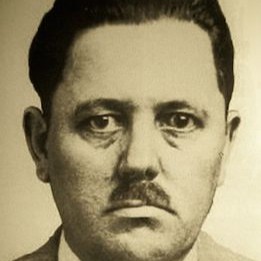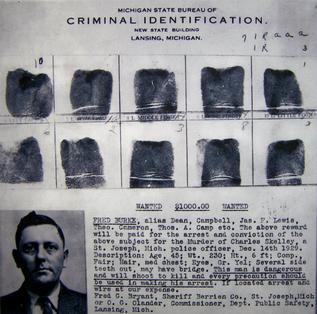
1893 - 1940
Fred Burke
Summary
Name:
Fred BurkeNickname:
KillerYears Active:
1910 - 1931Birth:
May 29, 1893Status:
DeceasedClass:
MurdererVictims:
1+Method:
ShootingDeath:
July 10, 1940Nationality:
USA
1893 - 1940
Fred Burke
Summary: Murderer
Name:
Fred BurkeNickname:
KillerStatus:
DeceasedVictims:
1+Method:
ShootingNationality:
USABirth:
May 29, 1893Death:
July 10, 1940Years Active:
1910 - 1931Date Convicted:
April 27, 1931bio
Fred R. Burke, born Thomas A. Camp on May 29, 1893, in Mapleton, Kansas, was one of eight children in a respectable family. Teachers noted him to be intelligent and engaged in religious activities like Sunday School. However, his life veered into crime at age 17 when he became entangled in a land fraud scam, prompting him to flee prosecution. Around this time, he began operating under the alias Fred Burke and became connected with criminal groups in St. Louis, Missouri.
By 1915, Burke joined the notorious Egan’s Rats, a dominant gang in St. Louis. His early role involved fraud, forgery, and other non-violent crimes. Drafted in 1917, Burke served as a tank sergeant during World War I, seeing action in France. After the war, he was arrested for pre-war charges and spent time in prison in both Michigan and Missouri. Following his release, he rejoined Egan’s Rats and escalated to armed robbery.
Burke was part of a group of veterans who carried out several high-profile robberies, including an $80,000 heist from a distillery. In the mid-1920s, after the leadership of Egan’s Rats was incarcerated, Burke and others fled to Detroit, aligning with the Purple Gang and later Al Capone’s outfit in Chicago. As his reputation grew, Burke became one of Capone’s most trusted hitmen, earning the nickname "Killer" Burke.
murder story
Fred Burke was long suspected of playing a central role in the bloody ambush that became known as the Saint Valentine’s Day Massacre. Seven associates of the North Side Gang were lured to a garage in Lincoln Park, Chicago—ostensibly over a whiskey deal—then executed by men disguised as police while armed with Thompson submachine guns and shotguns. Multiple pieces of evidence tied Burke to the crime. Ballistics analysis linked the guns found in his Michigan residence to the bullets used in the massacre. FBI and police probes, along with confessions from underworld informants like Barker Gang member Byron Bolton, included Burke among the shooters—alongside names like Fred Goetz, Gus Winkler, Ray Nugent, and Robert Carey.
Ten months after the massacre, Burke, using the alias Fred Dane, was involved in a fender-bender in St. Joseph, Michigan. When Patrolman Charles H. Skelly approached following the crash, Burke shot him dead—then fled the scene in a panic.
Authorities raided Burke’s bungalow in Stevensville, discovering a staggering arsenal—Thompson machine guns with loaded drums, rifles, a shotgun, thousands of rounds of ammunition, tear gas bombs, and even large quantities of stolen bonds. Fingerprint analysis confirmed Fred Dane was actually Fred Burke. Importantly, the weapons matched those used in the massacre.

Burke remained on the run until March 26, 1931, when he was apprehended—not in Chicago, but at his in-laws’ place in rural Missouri. The governor determined Michigan had stronger claims and Burke was extradited there. He was tried and convicted for the murder of Officer Skelly, receiving a life sentence in April 1931. There’s no record of him ever being tried for the St. Valentine’s Day Massacre. He served his time at Marquette State Prison and died there of heart failure on July 10, 1940, never having stood trial for his suspected involvement in the massacre.